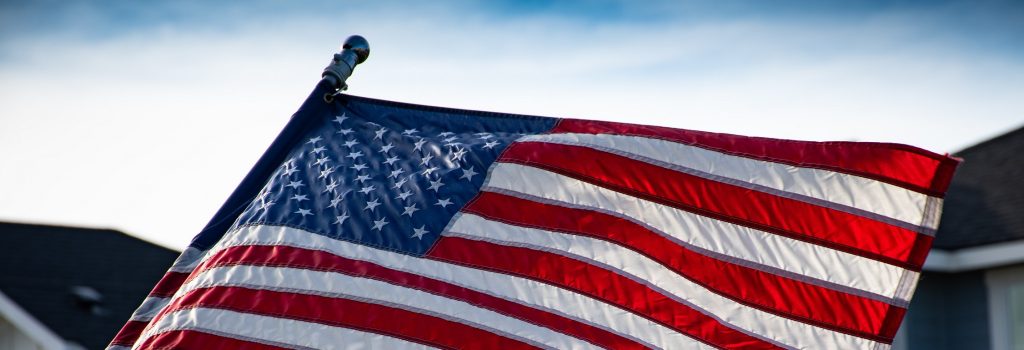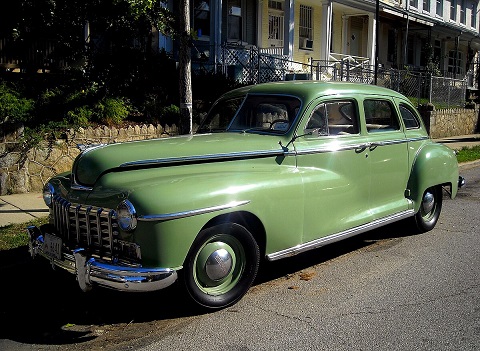
Those were the days? Before the New Deal in the 1930s, a well-paid working person had to put somewhere around 40% down to buy a home. It would be up to a building and loan association (B&L) to say yes to the loan.
The borrower made large loan payments twice a year. The lender would expect repayment in just ten or twelve years. If that was not possible, the borrowers would need to refinance with the B&L.
During that time, a borrower would shoulder significant risk. If a B&L failed, so did its borrowers.
Things have changed. How did the mortgage evolve into what we have today?
The Origins of the Word Mortgage
The original mortgage agreement can be traced back to ancient Persia (now Iran). Later, the Romans made the pledging of a home (collateral) an official financing instrument. The practice spread to Britain under Roman control. And that’s where the word itself was coined.
The syllable mort- comes from death, like mortician. The root of -gage means pledge. So, mortgage literally means dead pledge. And the home would indeed be dead to the borrower until the final payoff!
With the early form of mortgage — we’re going back here to a time before the Americas were colonized — only the lender got the benefit of its value. Lenders took profits from whatever business the borrower used the land to earn.
Times really have changed.
The lenders back in England could simply call their loan payoffs due whenever they wanted to. Their borrowers would have to scramble to come up with the payments — or else, the lenders could drag the debtors to court with their demands.
This caused many a debtor to petition the king for assistance, until Francis Bacon, the famous 17th-century Lord Chancellor, formulated a right of borrowers to repay their past-due depts. But they had a certain deadline, after which their right would be foreclosed. That was the origin of one concept that remains with us today: foreclosure.
FDR Responds to a 20th Century Foreclosure Crisis

Before the 1930s, the U.S. government played no role in home loans.
But after Franklin D. Roosevelt saw hundreds of thousands of people lose their homes to foreclosure, policies changed. The U.S. government set up the Home Owners’ Loan Corporation (HOLC) in 1933. It bought up a million distressed mortgages. It then reissued them as fixed-rate loans that gave borrowers the option of repaying them over 15 years.
HOLC home loans offered an important feature: the fixed interest rate. Getting their rates locked in meant people enjoyed predictable monthly schedules all the way through their final payoffs.
HOLC originated loans for U.S. home buyers for three years, servicing these borrowers up until its last year of existence: 1951. This pioneer of long-term mortgages would start and service about a million loans in its time, enabling most of its borrowers to stay in their homes.
Meanwhile, in 1934, the Federal Housing Administration (FHA) had made its debut. The FHA was known for its 30-year mortgage with low down payments — a mainstay of its work to this day.
☛ Here’s what’s new if you are thinking about applying for an FHA mortgage in 2023.
What else happened through FDR’s New Deal? FDIC mortgage insurance came into being. So did the Veterans Administration (VA). And people got back on their feet.
FHA-backed home buyers acquired mortgage insurance to cover the lenders. Buyers could pay the extra cost each month, so they could put less money down in the first place.
The Postwar Baby Boom Was Also a Homeowners’ Boom
In 1938, Congress set out to increase competition in the mortgage business by rolling out the Federal National Mortgage Association. That’s Fannie Mae, which was a government-owned entity in its early days. But it operated much like a business, offering long-term mortgages at fixed rates by selling debt to investors.
At that point, just over forty percent of households could afford to buy their homes.
Six in ten could purchase homes by the 1950s.
One big reason for the typical U.S. home buyer’s newly found purchasing power? The widespread adoption of the FHA-backed 15- and 30-year mortgage. VA loans, too, became highly popular. They were capped at 4% interest, and some borrowers could qualify to get them even without putting money down.
In 1968, Fannie Mae was privatized. Soon, Congress would create competition for Fannie Mae by establishing the Federal Home Loan Mortgage Corporation — Freddie Mac,
By the 1970s, inflation was on came into play. An ARM generally has an easy entrance point but the interest rate on the loan can go significantly higher over time.
Today’s homeowners usually opt for fixed-rate mortgages.
Fannie and Freddie Replace Savings & Loans as Trusted Mortgage Backers
As interest rates rose in the late 1970s and early 1980s, many Savings & Loans failed. This shocked people. Their government-backed positions had led people to put their faith in them. Bailouts followed.
Freddie and Fannie had to make good on their shareholders’ interests. By adopting automated loan underwriting methods, they could keep costs down. They, like many private institutions, were under pressure to make a lot of loans.
Lending practices went over into the fast-and-loose zone. Courting high-risk borrowers through subprime mortgages became common. This didn’t end well.
After the mortgage crisis began in 2007, a global financial crisis played out in 2007-2008. Many debtors lost their homes to foreclosure.
Fast-Forward to the 2008 Housing Crash: Government Again Seeks to Protect Borrowers
In the 2008 housing crash, homeowners defaulted in droves. Many had accepted risky loans with terms they could not afford. Some had adjustable-rate mortgages that looked good back when the interest rates were low. But when the interest rates stated rising, they forced many homeowners into unbearable debts.
Fannie and Freddie — both of which followed other lenders into the risky world of subprime lending — went into a government conservatorship that would “preserve and conserve their assets.”
The U.S. government also enacted protective legislation to tighten up lending standards. And that forced a new generation of buyers, who hadn’t created the problem, to deal with rules meant to rein in the people who had.
And Then Came the Covid-19 Pandemic
Lenders across the country got even stricter with loan application vetting once Covid started threatening livelihoods. These hurdles can and do put off applicants, forcing them to keep renting, often paying much more in rent than they would have had to shell out monthly on a mortgage.
Today’s borrowers also deal with flooding and climate issues their parents never experienced. And that means lenders are concerned about potential collateral, and what it’ll take to keep it properly insured.
With new technological breakthroughs to help with challenges, such as AI and electronic closings, the mortgage industry keeps on living in interesting times.
Supporting References
Michael J. Highfield, for The Conversation US, Inc., via TheConversation.com: A Brief History of the Mortgage, From Its Roots in Ancient Rome to the English “Dead Pledge” and Its Rebirth in America (Nov. 3, 2022).
American Financing, via AmericanFinancing.net: The History of Mortgage Lending.
Matthew Wells for Econ Focus, Federal Reserve Bank of Richmond® via RichmondFed.org: A Short History of Long-Term Mortgages (First Quarter 2023).
Jonathan D. Rose and Kenneth A. Snowden: The New Deal and the Origins of the Modern American Real Estate Loan Contract – Explorations in Economic History (Elsevier; 2013).
And as linked.
More on related topics: Mortgages, foreclosures
Photo credits: Brett Sayles and AgnosticPreachersKid via Wikimedia Commons CC BY-SA 3.0.
